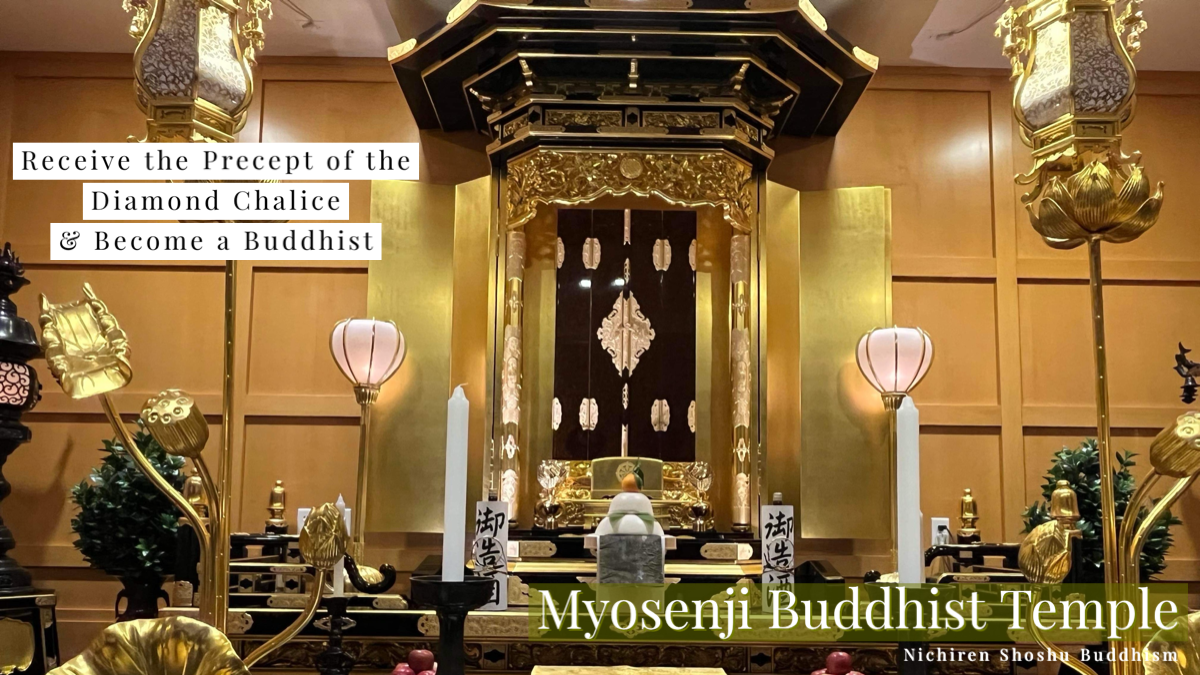Gosho: The individual and collective writings of Nichiren Daishonin, True Buddha and founder of Nichiren Shoshu. Goshos are generally divided into letters of personal encouragement, treatises on Buddhism and recorded oral teachings. Go is an honorific prefix and sho means writing(s).
May 2025 Gosho passage
“Reply to Shijo Kingo”
(“Shijo Kingo dono-gohenji”)
May 2, 1272 (Age 51)
You also follow me as a votary of the Lotus Sutra and tell many people [about this teaching]. Indeed, this is none other than the propagation [of the Lotus Sutra]. Carry through your faith and practice in the Lotus Sutra. If you strike flint to make a fire, you cannot produce a flame if you stop midway through. Muster your great power of faith so that not only all the people, high and low, of Kamakura but also the entire population of Japan will extol you as “Shijo Kingo of the Hokke sect.”
(Gosho p. 599 / Nichiren Shoshu Monthly May 2025)
Print or download May Gosho passage.
April 2025 Gosho passage
“Three Tripitaka Masters Pray for Rain”
(“Sansanzo ki’u no koto”)
June 22, 1275 (Age 54)
The best way to attain Buddhahood is to meet good influences. How useful could our shallow intelligence be for attaining Buddhahood? We must seek out good influences even if we have sufficient wisdom to distinguish hot from cold. However, encountering a good influence is the most challenging feat. Therefore, the Buddha compared the rarity of meeting a good Buddhist influence to a one-eyed turtle finding a piece of driftwood [with a perfect hollow] for it to fit in or to the difficulty of dropping a piece of thread from the Brahma Heaven and passing it through the eye of a needle on the earth. Furthermore, in the evil age of the Latter Day of the Law, there are more evil influences than the dust particles that make up the entire world, while the number of good influences is fewer than the specks of dirt that one can place on a fingernail.
(Gosho p. 873 / Nichiren Shoshu Monthly April 2025)
Print or download April 2025 Gosho passage.
March 2025 Gosho passage
“The Essentials of the Lotus Sutra”
(“Hokke shuyo-sho”)
May 24, 1274 (Age 53)
Of the various illnesses, the gravest of them all is slandering the Lotus Sutra. Nam-Myoho- Renge-Kyo is the best of all medicines. Lengthwise and crosswise, this Jambudvipa world measures 7,000 yojanas and contains 80,000 kingdoms. The kosen-rufu of the Lotus Sutra, which was not achieved during the 2,000 years of the Former and Middle Days of the Law, must be attained during the present period of the Latter Day of the Law. Otherwise, Shakyamuni will become the Buddha of the great falsehood, and Taho Buddha’s certification will only be as good as foam on the water. The attestations of the innumerable emanation Buddhas of the ten directions will be [torn apart] like [the leaves of] the plantain plant.
(Gosho p. 735 / Nichiren Shoshu Monthly March 2025)
Print or download March 2025 Gosho passage.
February 2025 Gosho passage
“Reply to Myoho-bikuni”
(“Myoho bikuni-gohenji”)
September 6, 1278 (Age 57)
In his teachings, the Buddha gives us the following admonishment: If one is fearful and hesitant to propagate [the Law] when encountering an enemy of the Lotus Sutra, then this person is an enemy of Shakyamuni Buddha. No matter how wise or good one may be, it is certain that such an individual will fall into the hell of incessant suffering. It is like a child who sees that a stranger is trying to kill his parents but does not warn them of the danger. Moreover, it is as if you, as a vassal, knowing that someone is plotting the downfall of the king, do not remonstrate with him, because you fear that you will suffer hardships.
(Gosho p. 1262 / Nichiren Shoshu Monthly February 2025)
Print or download February 2025 Gosho passage.
January 2025 Gosho passage
“The Four Stages of Faith and the Five Stages of Practice”
(“Shishin gohon-sho”)
Early April, 1277 (Age 56)
Murky water does not have a mind, but it can become clear by capturing the [reflection of the] moon. When the grass and trees are showered with rain, they cannot possibly be aware of it, yet they produce blossoms. The five characters of Myoho-Renge-Kyo are neither the text of the sutra nor its meaning. They are none other than the essential intent of the entire sutra. Beginning practitioners may be unaware of this essence, but by practicing [Myoho-Renge-Kyo], they will naturally follow the sutra’s intent.
(Gosho p. 1114 / Nichiren Shoshu Monthly January 2025)
Print or download January 2025 Gosho passage.
